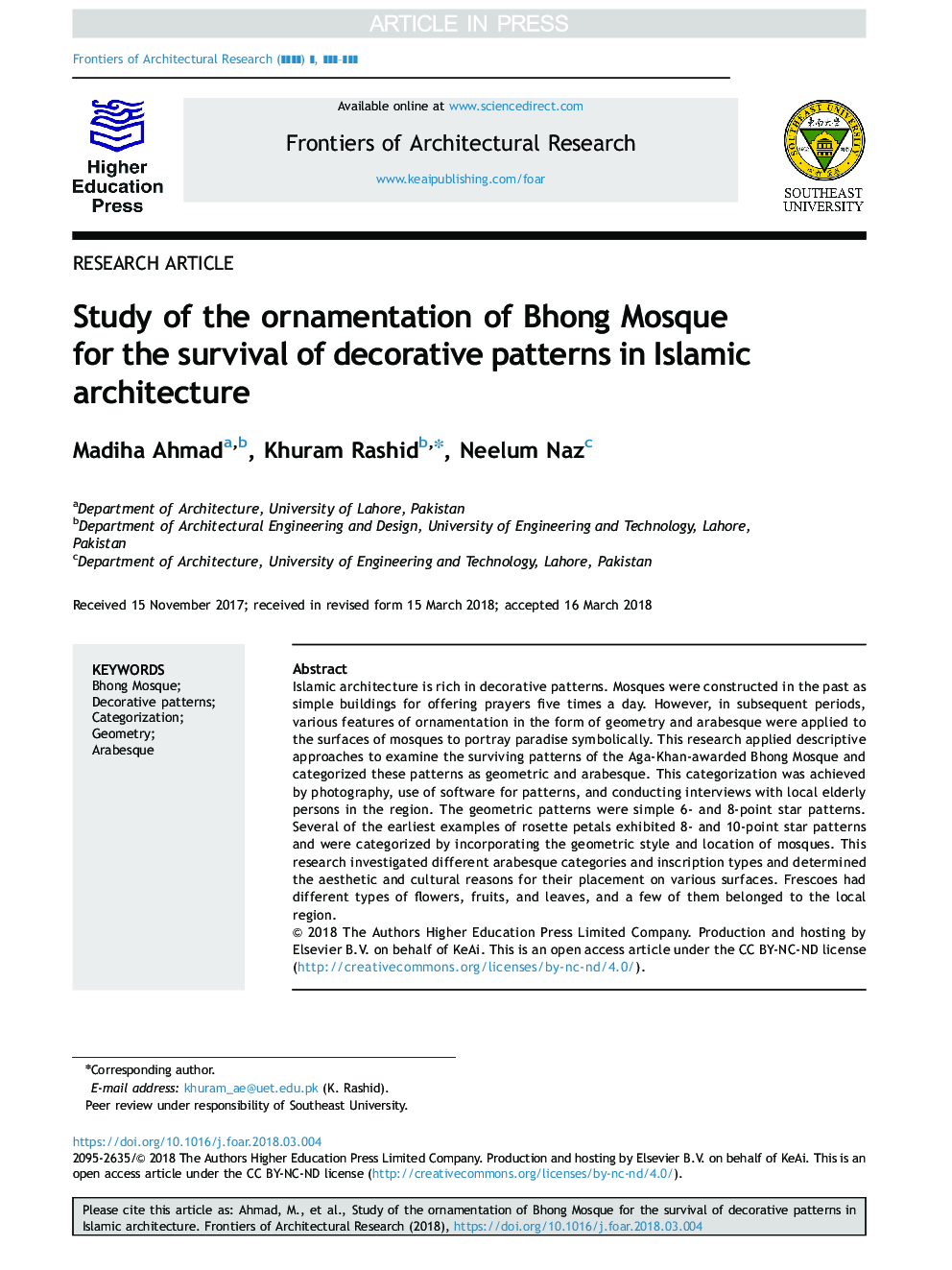| Article ID | Journal | Published Year | Pages | File Type |
|---|---|---|---|---|
| 6742339 | Frontiers of Architectural Research | 2018 | 13 Pages |
Abstract
Islamic architecture is rich in decorative patterns. Mosques were constructed in the past as simple buildings for offering prayers five times a day. However, in subsequent periods, various features of ornamentation in the form of geometry and arabesque were applied to the surfaces of mosques to portray paradise symbolically. This research applied descriptive approaches to examine the surviving patterns of the Aga-Khan-awarded Bhong Mosque and categorized these patterns as geometric and arabesque. This categorization was achieved by photography, use of software for patterns, and conducting interviews with local elderly persons in the region. The geometric patterns were simple 6- and 8-point star patterns. Several of the earliest examples of rosette petals exhibited 8- and 10-point star patterns and were categorized by incorporating the geometric style and location of mosques. This research investigated different arabesque categories and inscription types and determined the aesthetic and cultural reasons for their placement on various surfaces. Frescoes had different types of flowers, fruits, and leaves, and a few of them belonged to the local region.
Keywords
Related Topics
Physical Sciences and Engineering
Energy
Renewable Energy, Sustainability and the Environment
Authors
Madiha Ahmad, Khuram Rashid, Neelum Naz,
